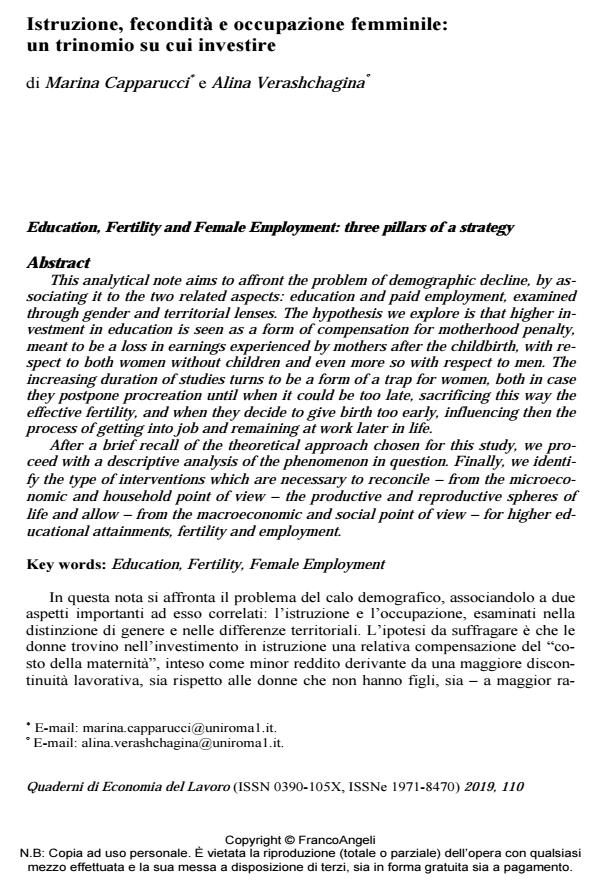Education, Fertility and Female Employment: three pillars of a strategy
Journal title QUADERNI DI ECONOMIA DEL LAVORO
Author/s Marina Capparucci, Alina Verashchagina
Publishing Year 2020 Issue 2019/110
Language Italian Pages 20 P. 73-92 File size 469 KB
DOI 10.3280/QUA2019-110004
DOI is like a bar code for intellectual property: to have more infomation
click here
Below, you can see the article first page
If you want to buy this article in PDF format, you can do it, following the instructions to buy download credits

FrancoAngeli is member of Publishers International Linking Association, Inc (PILA), a not-for-profit association which run the CrossRef service enabling links to and from online scholarly content.
This analytical note aims to affront the problem of demographic decline, by associating it to the two related aspects: education and paid employment, exam-ined through gender and territorial lenses. The hypothesis we explore is that higher investment in education is seen as a form of compensation for motherhood penalty, meant to be a loss in earnings experienced by mothers after the child-birth, with respect to both women without children and even more so with respect to men. The increasing duration of studies turns to be a form of a trap for women, both in case they postpone procreation until when it could be too late, sacrificing this way the effective fertility, and when they decide to give birth too early, influ-encing then the process of getting into job and remaining at work later in life. After a brief recall of the theoretical approach chosen for this study, we pro-ceed with a descriptive analysis of the phenomenon in question. Finally, we iden-tify the type of interventions which are necessary to reconcile - from the microe-conomic and household point of view - the productive and reproductive spheres of life and allow - from the macroeconomic and social point of view - for higher educational attainments, fertility and employment.
Keywords: Education, Fertility, Female Employment
Marina Capparucci, Alina Verashchagina, Istruzione, fecondità e occupazione femminile: un trinomio su cui investire in "QUADERNI DI ECONOMIA DEL LAVORO" 110/2019, pp 73-92, DOI: 10.3280/QUA2019-110004